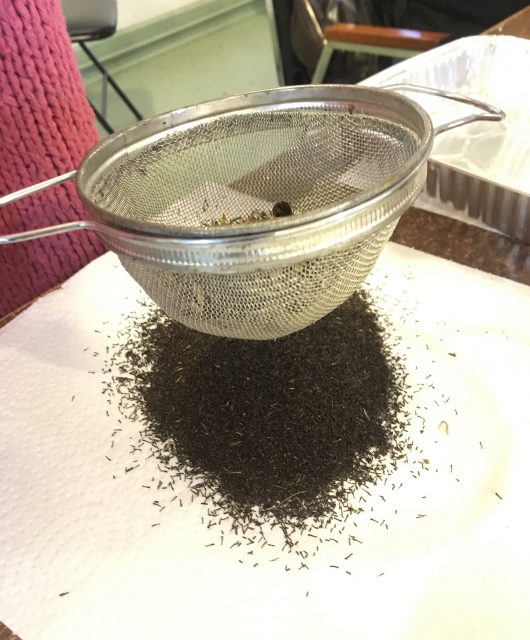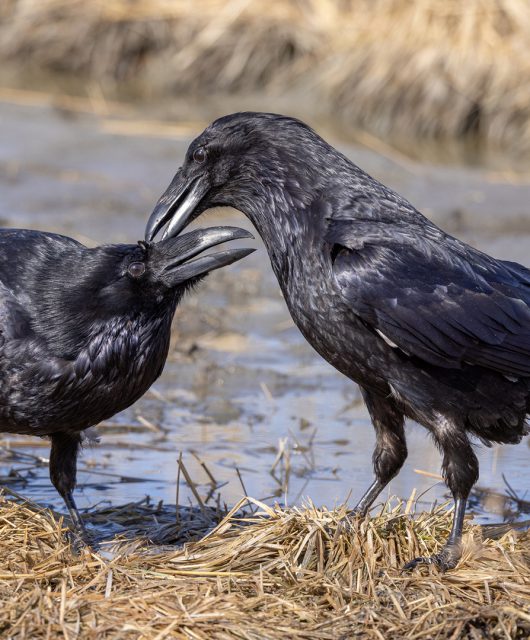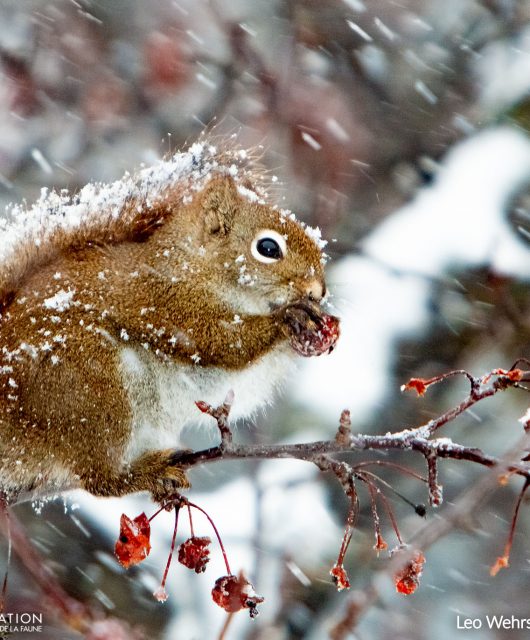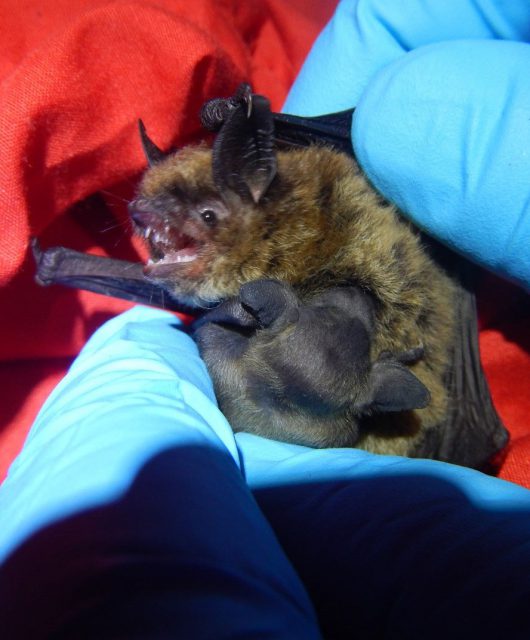The Canadian Wildlife Federation was fortunate enough in October 2023 to host Sean Landsman, PhD, in a one-hour public webinar.
In this webinar Sean gave us tips and tricks you can use in the field with whatever camera you have at your disposal, no matter its cost.
Did you miss the webinar? Not to worry, you can watch the recording of the webinar here on the CWF website. Dr. Landsman very kindly offered to answer many of your questions we could not get to during the timeframe of the webinar.
Q: Do you have any suggestions for enhancing the quality of photos taken with a phone when zooming in to capture distant subjects?
Landsman: The issue with using your phone to take photos of distant objects is that the zoom in our phones is mostly “digital” zoom vs. optical zoom. Digital zoom is basically just cropping the field of view and so is really dependent on the # of megapixels your phone’s camera sensor possesses. In short, there’s not much you can do aside from trying to purchase a phone with the highest megapixel count possible. One thing you could try – although I’m unsure how well this would work – is to purposefully not zoom in, then take the original photo and enlarge it in 3rd party software like Photoshop, then crop in from that enlarged image. This assumes, however, that you have software like Photoshop capable of doing that.
Q: When taking pictures of stationary subjects e.g., flowers, is it better to shoot in bright or lower light?
Landsman: Couple thoughts here. Bright light will cast harsh shadows on objects unless they are directly facing the sun. Clouds act like a giant softbox and soften light, reducing shadows. If by low light you mean dusk or dawn, both of these times of the day can produce warm light (provided no clouds) that’s very appealing (i.e., “Golden Hour”). You could create your own sunshade and still shoot in bright sunlight by using something like a white t-shirt spread out over a frame made of sticks or wood – this will soften incoming light. You could also use an umbrella to cover your subject.
Q: What are some tips for minimizing the glare on yellow and white objects?
Landsman: If you’re getting lots of glare or “hotspots” on yellow and white objects, it’s probably because there are other darker elements around the yellow/white ones that are tricking your camera’s light metering system into thinking it needs to expose for longer to bring out details in the darker areas. This means more light reflecting off the brighter yellow/white surfaces will reach your sensor, causing hotspots. To counter this, you need to meter off the yellow/white areas. I’m not sure what camera you’re using, but here are some tips. On DSLRs or mirrorless cameras, you’ll have the ability to change metering modes. You may want to use “spot metering” or “center-weighted.” On a phone, you can tap and hold on the subject and the camera should enter AE/AF Lock mode. AE = autoexposure so doing this locks the exposure on the subject you’ve tapped (similar to spot or center-weighted metering). You can also just manually underexpose by using exposure compensation on your DSLR/mirrorless/compact camera or dragging the brightness down on your phone’s camera.
Q: When photographing animals that are high up or in flight, what are some methods you use to get clear photos of the subject?
Landsman: By “clear” I assume this to mean sharp and the only way to get sharp images of things high up (like birds) would be to use a shutter speed sufficiently fast to eliminate blur from the subject’s movements or your own shaking. Using a tripod will help greatly by reducing camera shake. You could also prop your camera on a beanbag hung off your car window (if shooting from a car) or on a rock. A wide stance and steady breathing can help, too. I would also avoid shooting directly into the sun.
Q: During your presentation you touched on varies rules in photography, when is it okay to ignore the rule of thirds or any other photography rules? And why?
Landsman: I think *when* you ignore classic rules of composition depends entirely on what kind of mood you’re trying to invoke in the image. Sometimes purposefully centering an animal for a portrait makes more sense if trying to invoke the feeling of a “headshot.” Or maybe you want to blow out the background and center the subject almost like recreating a studio shot. The beauty of digital photography is you can see the results of your efforts immediately, so I’d say try both adhering to compositional rules and blow them out of the water! Look at the images later and see if any resonate with you.
Is taking a video instead of photos an effective method when attempting to take photos of subjects that are moving quickly (e.g., taking screen shots from video footage)?
I think from a natural history perspective this is actually a really good idea. In fact, I know there are some photographers that do this with high resolution video cameras (e.g., 8K cameras) and use the pre-record function as they wait for action. That pre-record function actually records usually 15-30 seconds before you actually hit record, ensuring that if action occurs in the blink of an eye as you’re watching through the viewfinder, you’ll never miss that decisive moment. I think what you propose is perfectly reasonable, especially if you don’t intend to print images very large and can just share screenshots from the video.
Q: When taking photos of different subjects, do you only focus on the subject, or do you include elements of the habitat that you find them in?
Landsman: I do both as there’s value in isolating the subject as well as giving context to its place in the world. The more elements you include in a frame, the busier it gets, so you have to be careful. But putting the subject in context, such as a Common Loon sitting on its nest, or a Great Gray Owl perched high atop a conifer, gives more “information” than if you just zoomed in tight on the loon or the owl’s head. Personally, as an ecologist, I like seeing more “context” in images vs. just standard portraits. And remember if you’re taking a photo for iNaturalist, you can upload more than one image, so you could make that first photo the identifiable one of the species and take a second one to show the context and habitat.
Q: As a professional photographer, do you have any tips on how to pitch yourself and work? For example, do you reach out to outlets for assignment opportunities, or do they reach out to you?
Landsman: A bit of both, but if you want to make a go of photography as a business, even as just a “side hustle” so to speak, then you’ll need to be prepared to reach out yourself and pitch your work. If you’re pitching just imagery, editors will want to know what makes your shots unique and why their readership would care. If you’re willing to do some writing as well, editors appreciate not having to find someone to craft a story about your images. So, write engagingly and create a story with your pitch. Aim to hook the editor. Always think about “WHY” images or a story is important and/or timely. And do your homework on the outlet you’re pitching to, especially who their audience is. Be prepared for rejection, but just accept it and pitch to another outlet; chances are that SOMEONE will pick up a story. Be prompt and prioritize good communication when/if they get back in contact with you.
There were even more questions that arose and CWF staff jumped in to answer. Read part 2 of this blog, “Fancy Cameras Not Required”
You can learn more about CWF and iNaturalist or watch one of our many wild webinars at the CanadianWildlifeFederation.ca




